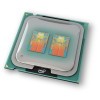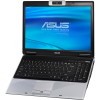- Qualcomm Launches Snapdragon 4 Gen 2 Mobile Platform
- AMD Launches Ryzen PRO 7000 Series Mobile & Desktop Platform
- Intel Launches Sleek Single-Slot Arc Pro A60 Workstation Graphics Card
- NVIDIA Announces Latest Ada Lovelace Additions: GeForce RTX 4060 Ti & RTX 4060
- Maxon Redshift With AMD Radeon GPU Rendering Support Now Available
Content and news by Rob Williams

Rob's Recent Content
Blu-ray Hardware Not Picking Up Steam
When HD DVD went the way of the dodo, many (including myself) thought that Blu-ray would be sure to pick up steam. After all, it’s high-definition! The 1080p picture quality it offers far surpasses what a 480p that a DVD can deliver. But, it looks that hardware sales are picking up at a snails pace, with a painful 2% increase between February to March.
I am not sure about sales of the actual movies, but I’m sure they are not exactly flying off the shelves either. The prices are far too ridiculous at this point in time. I currently own nine, and even those I read reviews on prior to a purchase. At those prices ($30+), you can’t just go out and randomly choose movies, or you’ll get burned.
The same goes for hardware, which hasn’t gone down much since HD DVD’s death. The Playstation 3 still proves to be the best value for Blu-ray out there, but that’s still ~$500 that some people don’t want to spend, especially if they have no interest in the gaming capabilities of the machine. In general, I believe it to be a bad thing when the cheapest video player costs more than most reasonable HDTVs. Until that changes, Blu-ray will continue to sit in the lull it’s in.

|
Cost is likely a top factor in the slow adoption of Blu-ray Disc, as even the cheapest player is hundreds more than an upscaling DVD machine. In other reasons, consumers may not immediately see the benefits of upgrading to Blu-ray Disc, which mainly provides increased quality of picture and sound. Features such as chapter skip, multiple language tracks and lack of rewinding tape are already present on DVD.
Source: DailyTech
Published on May 2, 2008The ABCs of Securing a Wireless Network
It wasn’t too long ago that wireless networks were exclusive to tech-heads, but now they are quickly becoming more popular than wired networks. When I first moved into my current apartment two years ago, there was one other person with a wireless network in the general vicinity. That number is now at twelve. That’s growth.
But how many know how to set up their network properly? Considering that most people who pick up a wireless router are not tech enthusiasts, it’s probably safe to say not many. The problem isn’t so much setting up a network properly, but setting it up securely, which is a topic Ars Technica tackles in their latest how-to guide.
Discussed are the absolute basics, but they also discuss the differences between WEP, WAP, WPA and WIP. Two of those were made up, so you’ll have to check out the article to find out which ones. It’s a good read though, and one that should be passed along to friends you know who are setting up such a network. The sad fact is though, most people simply don’t care or understand why there is a need for security. If that’s the case, it’s time for you to sit outside their building and start milking their bandwidth!
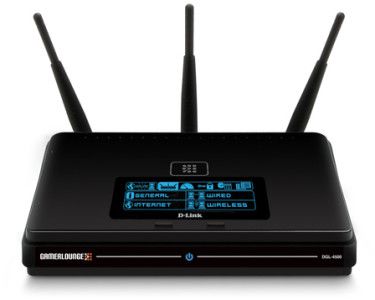
|
Wireless networking is on its way to becoming a ubiquitous home technology, but there’s a difference between having a home full of network devices and having those same devices happily sharing a single wireless network. It can be difficult to find a single encryption standard that all the devices can agree on.
Source: Ars Technica
Published on May 2, 2008Adobe Guru Moves to Microsoft to Help Improve Windows
Whenever an OS X vs. Windows argument arises, a common theme is design and aesthetics. It’s no secret, Microsoft is not the king of amazing user interfaces, although what’s been pushed out has at least been usable (some would argue about the Office 2007 ribbons, however). Microsoft is looking to change this plague they’ve suffered with a new hire, Mark Hamburg from Adobe.
Mark was a programming guru for Adobe Lightroom, which happens to be a fantastic looking – and intuitive – application. The problem, though, is that its UI is far different from Photoshop, so changes like that aren’t going to be practical for Windows. If simple ribbons added to Office burdened some people, overhauling an entire OS would make them switch to OS X or Linux!
Still, Apple fanboys love to shout at Windows fans for their ugly and counter-intuitive OS, so hopefully this move will help Microsoft push out a great looking and well designed product, instead of the same product with see-thru glass.

|
Designing a user interface for a product with as limited a range of abilities as Lightroom is a very different task than a user interface for an entire operating system, though. But even if Windows doesn’t directly copy Lightroom, for example, by changing its look to suit the task at hand, I for one would welcome a version of Windows with elegance, personality, and power.
Source: Underexposed Blog
Published on May 1, 2008NeroLinux 3 Updated to 3.5, Receives Command-Line & Eee PC Support
It’s closing in on a year since NeroLinux 3 was first released, and somehow, a “major” update has passed without me noticing. At CeBit in March, Nero launched 3.0.5.1 of the application, bringing a few new features and bug fixes along. One of the biggest new features is a command-line interface, which I’m sure will get about as much use as the HD DVD burning feature.
I kid, of course. Also new is direct audio ripping to MP4, encoded with the AAC codec. That’s fine and good, but I’d still love to see tweaking-abilities for each codec and also a secure ripping mode, though. Another great feature is support for new sub-notebooks, including the Eee PC. When a small resolution is detected, the application will scale itself appropriately.
Though it’s a paid program ($20), I love NeroLinux and recommend it to anyone, especially if you are coming from a Windows environment and want a familiar face. Many people will debate the cost though, and for good reason since k3b handles everything just as well. I prefer the GUI in NeroLinux though, and it also feels more stable. While Nero spits out great burns, k3b has for some reason been erroring out on every one lately. Probably a simple issue to resolve, but troubleshooting is not so much fun.
You can check out a trial version of NeroLinux 3 here and read my review from last spring here.
Nero, leaders in digital media technology, have announced that they will be releasing Nero Linux 3.5, the latest update of the definitive burning solution for the Linux operating system, allowing users to access content on a variety of platforms. Nero Linux 3.5 further extends Nero’s technology expertise with a new command line client that lets users engage the powerful engine through scripts and third-party applications.
Source: NeroLinux 3 Site
Published on May 1, 2008Microsoft Postpones XP’s SP3 Release Due to Bug
It’s beginning to feel like SP3 is never going to see the light of day! Microsoft, at the very last minute, decided to not release XP SP3 due to a bug that breaks the Microsoft Dynamics Retail Management System. Although it’s not likely to affect normal users, it could potentially cause issues for small and midsized businesses.
As of right now, there is no new date for the release, and it’s hard to speculate how deep-rooted the bug actually is. Microsoft is urging consumers to not download the service pack, and for the most part, there’s likely little reason to anyway as it doesn’t unveil any real new functionality. But for those who insist on it, download at your own risk.
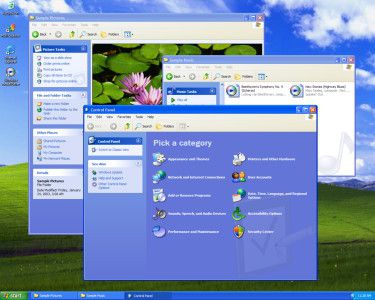
|
To help protect our customers, we plan to put filtering in place shortly to prevent Windows Update from offering both service packs to systems running Microsoft Dynamics RMS. Once filtering is in place, we expect to release Windows XP SP3 to Windows Update and Download Center.
Source: DailyTech
Published on April 30, 2008Rogers Bringing the iPhone to Canucks
In what could be the smallest press release ever, Rogers Wireless have announced that the iPhone will become available to Canadians later this year. Details are ultra-scarce at this point, but sometime during the fall sounds reasonable, or at the end of summer. Though the release is light on details, it sounds like the deals are made and it’s just a matter of finalizing them and getting things in place.
Even if it launches in the summer, it will be a full year later than I ever expected it to launch. I admit, I originally thought it was going to launch right after the US model, but that’s what happens when two companies can’t just hold hands and get along.
Regardless, it’s about time. I’m no huge cell phone nut, but having used the iPhone on a few occasions before, I’d have no problem picking one up. It helps that my current cell phone carrier (Bell / Aliant) offers the most lackluster phones available (no GSM with them), so the decision is made a wee bit easier.

|
TORONTO, April 29 /CNW/ – Ted Rogers, President and Chief Executive Officer of Rogers Communications Inc. today issued the following statement: We’re thrilled to announce that we have a deal with Apple to bring the iPhone to Canada later this year. We can’t tell you any more about it right now, but stay tuned.
Source: Rogers Press Release
Published on April 30, 2008Intel Core 2 Quad Q9450 2.66GHz
The wait for an affordable 45nm Quad-Core is now over, and the Q9450 promises to become the ultimate choice of the new offerings. It’s not much slower than the QX9650, offers 12MB of cache and as expected, has some fantastic overclocking ability. How does 3.44GHz stable sound?
Published on April 29, 2008Psystar’s Open Computer Makes Its Way Into Customer’s Arms
It looks like the Psystar “open computer” isn’t a scam after all. One Gizmodo reader received his rig and even took a video and a few pictures of the unboxing. From what it seems, the OS boots up and runs well, but it’s difficult to tell from such a short video. The biggest issue it seems, is that the OS cannot be updated, which is to be expected. If the computer isn’t a true Mac, then the updater won’t know what to update.
It’s easy to say that the computer is worth the time if you are looking for a cheap Mac, but the fact of the matter is, Psystar is using publicly free software to accomplish what they are doing. If you are at all technically savvy, you could purchase your own parts for cheaper and accomplish the same thing.
But that’s besides the point. It’s not so much a scam if the computers are shipping, so this is a good sign. It will be better when we see more examples, though. Of course, I’m more interested in seeing how Apple will handle this, and more importantly, when.

|
It’s alive. Reader Patrick (Whiskeyfrown) is lucky enough to be using one of the few Psystar Open Computing machines that have made it into the wild, and he was generous enough to make a video showing the machine (including the connections in the back to the monitor to show that it’s legit).
Source: Gizmodo
Published on April 29, 2008Holographic Storage Nearing Availability, At 150GB Per Disc
Burn DVD’s much? Ever curious about how long the data will remain on those discs? That’s a common worry nowadays, and for good reason. If you burn precious family photos, you’d rather them be safe. Essentially, the only way to combat this going forward would be to re-burn our media as time passes, which would likely be to new media formats each time (given that we will likely be using a completely new media type every ten years).
Company InPhase has a solution to this problem though, albeit an expensive one. Their “holographic” storage system allows you to store upwards of 150GB per disc ($180 each) at a rather slow 20MBps. Slow, but InPhase promises that the discs can last upwards of 50 years. That’s a lot, considering the shelf life of a standard DVD is much less. Not to mention that DVD’s hold a lot less.
But if you are like me and refuse to pay the $18,000 for the recorder itself, then it’s best to just take good care of your DVDs. The leading killer of optical media is having them lying around the house, or leaving them in direct sunlight. Storing them in a dark place and sealed off air-tight should prolong the life dramatically.
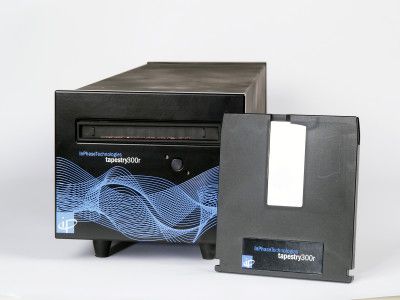
|
Questions over long-term backwards compatibility may also blunt Tapestry 300r sales. The company’s literature states that the yet-to-be-released Tapestry 800r and 1600r will be backwards compatible with 300r discs, but does not state that the 300r will be able to read 800r and 1600r media once those discs are available.
Source: Ars Technica
Published on April 29, 2008AMD Launches Business Class Initiative
“Business Class” is a simple term, but it means great things. Better things. Things that regular schmucks can only dream of. Well, for those who are a fan of all that business class offers, AMD has got you covered. They have unveiled an entirely new processor line-up today that caters directly to the business. While the processors themselves are similar to current offerings, it’s the support that’s been improved.
For starters, the lineup consists of “stable processors” (odd wording?) which include a 24-month stability warranty. Though, this seems somewhat needless. When is the last time a CPU just up and died on you? I’ve personally never had that happen once, or know of it happening to anyone else. But that’s aside the point here. These CPUs are to be paired with the 780V chipset, which is guaranteed to be available commercially for the next eighteen months.
Models include the X4 9600B ($230), X3 8600B ($175), X2 5400B ($120), X2 5400B ($110), X2 5000B ($95), X2 4450B ($85) and finally, the lone single-core of the bunch, the 1640B ($50). This is somewhat of a unique program for AMD, but it makes sense. For businesses that use their processors, it’s reassuring to know that they are backed by good support. Now, time to wait and see how well it takes off.

|
SUNNYVALE, Calif. — April 28, 2008 –AMD (NYSE: AMD) today introduced AMD Business Class, an initiative dedicated to developing AMD processor-based commercial desktop and notebook solutions designed specifically for businesses. AMD Business Class technology is designed to offer the best value and tools on the market for OEMs and system builders to provide a solid, reliable foundation that delivers exceptional performance and power savings, industry-leading longevity and stability, and supports the essential security and manageability business users require.
Source: AMD Press Release
Published on April 28, 2008Stern Pinball Refuses to Let Pinball Die
I doubt too many gamers would disagree that arcades are a dying breed, and most will claim that they already are. It’s true… it’s difficult to find a good arcade now, and even if you happen to stumble on one, most of the games will be circa ’80s or ’90s. So what’s that saying about pinball machines? Remember those?
I have to admit, I’ve always been a fan of pinball, and would own my own machine if I had room (someday, Circus Voltaire, someday), and according to a recent report at the NY Times, half of the people who purchase pinball machines today do purchase them for household use. That’s saying something, given their ~$5,000 price tag.
Stern Pinball Inc. happens to be the last manufacturer of its kind, which is sad in a lot of ways. But if the owner Gary Stern has his way, pinball will not die anytime soon. His factory sounds like quite the place to work, also. Workers are required to play at least 15 minutes of pinball each workday. That doesn’t sound so bad! Check out the article for some great images and other interesting tidbits about the company.
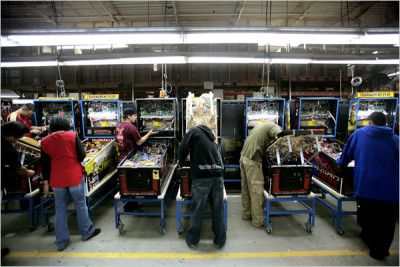
|
Some workers are required to spend 15 minutes a day in the “game room” playing the latest models or risk the wrath of Mr. Stern. “You work at a pinball company,” he explained, grumpily, “you’re going to play a lot of pinball.” (On a clipboard here, the professionals must jot their critiques, which, on a recent day, included “flipper feels soft” and “stupid display.”)
Source: New York Times
Published on April 28, 2008ASUS M51S 15.4″ Notebook
Have a $1,000 budget for a new notebook? Look no further than the ASUS M51S. Touted as a multi-media notebook, it offers a 15.4" screen, 250GB HD and 3GB of RAM. Included also are 4 USB ports, DVI and VGA outputs, full numpad, fingerprint reader, a face-detection logon system and more.
Published on April 28, 2008Want Better Dell Customer Service? Open that Wallet Wider!
One would think that Dell, being the massive company they are, could deliver great customer service. But no. Instead, they’ve become notorious for out-sourcing their support to India. That in itself isn’t the problem, but being unable to properly understand the other person on the line is frustrating. I know, I’ve been there. I think it is even worse when you yourself know what the problem is, because trying to convince the person on the line to forgo the rules in the book is even more frustrating.
But Dell is looking to change that hassle. For a price, of course. Yes, to have better customer service, you will need to pay a premium, although it seems unclear at this point how large that premium will be. But if you have it, you will be able to talk to customer service based in the US that know what they are talking about, rather than those who just read from a book.
I have to wonder what kind of premium this is going to be, because as it stands, even Dell’s $400 3-year warranty doesn’t “warrant” you to ideal customer service. This latest attempt at good customer service is laughable at best. Good customer service shouldn’t cost hundreds of dollars.

|
This new fee-based offering is designed specifically for those customers who want to engage with the same dedicated team each time they have an issue with any of their in-warranty Dell-branded products. The premium service offer provides household support by an advanced support team in North America for one year. The technicians are empowered to address a comprehensive range of issues across the breadth of Dell’s product line.
Source: Consumerist
Published on April 28, 2008Brazil KDE Usage by End of 2009: 52,000,000 Students
Regardless of whether you are talking about 52 million dollars or 52 million grains of rice, 52 million is a huge number. It’s also the projected number of students to be using KDE by the end of 2009 in Brazil. According to reports, by the end of this year, 29,000 labs will be serving 32 million students, and by the end of next year, that will increase to 53,000 labs and 52 million students using KDE.
This news isn’t only great for the KDE desktop (which it is), but Linux in general. That is huge adoption, right there. The screenshot below is somewhat misleading because it won’t be KDE 4 they’ll be using right off the bat, but rather KDE 3.5 – a good move in my opinion. I’m not against KDE 4, 3.5 is very lightweight and very customizable.
If interested in seeing how this project will play out, be sure to check out this blog entry.
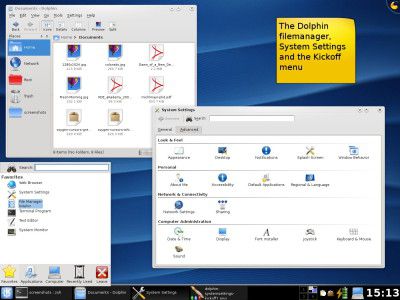
|
The systems use KDE 3.5 and take full advantage of Debian as well as KDE’s Edu and Games projects, use of KDE4 in future implementation is just starting to be explored. Perhaps one of the most interesting aspects of the deployment is how they maximize investment in hardware by putting several heads on each system.
Source: aseigo’s Blog
Published on April 25, 2008CompUSA Back From the Dead with 15 Re-Opened Stores
Last December, we first learned that CompUSA was closing up shop, but that didn’t last too long. Less than a month later, we learned that Systemax, the parent company of Tiger Direct, purchased all assets and planned to re-open a few of the stores. Less than four months after the acquisition, 15 stores have been re-opened.
It seems Systemax wants to start out slow to see how things progress, because the only locations open right now are available in Florida, Texas and a single location in Puerto Rico. From comments at Engadget, it seems the insides are similar to Tiger Direct’s retail outlets. Going to CompUSA.com shows similar traits to TD also though, such as the identical Favicon to Tiger Direct’s own site and also similar fonts in their banners.
I know many people who enjoyed shopping at CompUSA, so hopefully the revised version doesn’t lack what made the old one worthwhile. It’s going to be interesting to see if Systemax can keep these stores on their feet, but things look to be off on a good foot.

|
We’re not sure why the Sunshine State faces the brunt of CompUSA’s angry zombie wrath — do retirees enjoy being ripped off?* — but Texans and Puerto Ricans can join in the fun with four stores of their very own.
Source: Engadget
Published on April 25, 2008Simple KDE Rsyncing with Komparator
If you at all frequent our news, then you are probably aware that I use Linux most of the time. It’s on my main work machine, while Windows is on the gaming rig and also the primary benchmarking machine that’s responsible for most of our performance-related articles. You might also know about rsync, an application designed for Linux that compares two directories (remote ones also) and can make sure they are exact duplicates, if that’s your goal.
Rsync is a powerful tool and has easily proven to be one of my most relied-upon. I’ve come to enjoy it so much, that I’ve even written an entire article around it. But, it does have some downsides. For some reason lately, whenever I attempt to rsync a local folder to my NAS box for backup, instead of filling in the blanks, it actually overwrites what is there, meaning that it’s essentially copying that 130GB folder on top of itself. For a network connection, that is one slow process.
With that frustration, I stumbled on Komparator, a KDE-based tool that acts as an rsync frontend. In my particular case, it actually worked better than rsync, because it allowed me to proceed with that previously mentioned task, but did so without overwriting files that were already on the target, aka: exactly what rsync should have done.

|
The program has many options, and even allows you to save presets in case you run the same process regularly. The three main options are to allow you to first find duplicate files, find missing files and also find newer files… and all will be displayed in an easy-to-read manner. For some, that will be far better than dealing with a command-line.
Komparator is somewhat simple in design, but it does what it’s meant to do, and does it quite reliably. I rsync’d three different folders to my NAS box and it did so without issue. So if you are looking for an easy way to rsync and happen to use KDE, definitely check it out.
Source: Komparator at KDE-Apps
Published on April 24, 2008Looking for a Killer Dual-Core? Don’t Miss Our Intel E7200 Review!
For those who might have missed it, we posted a review of Intel’s upcoming “value” Dual-Core processor earlier this week. The E7200 will retail for around $150 and rolls in with a 2.53GHz clock speed and 3MB of L2 Cache. Overall, it’s a solid offering, and given the price, it should be one hot product this summer.
I wasn’t able to push the chip to the heights I would have liked to seen it at, but 3.33GHz on reasonable voltages proved stable, so that says something. There’s no better feeling than pushing a budget CPU to work like a more expensive one. Well, there’s almost no better feeling.
So if you are on the lookout for a new Dual-Core and are on a budget, do yourself a favor and check out our review!
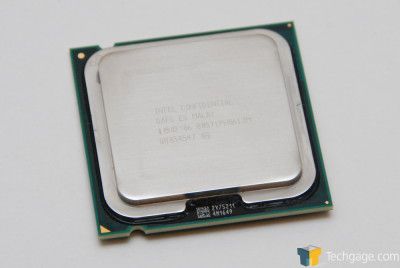
|
Simply put, the E7200 is an absolutely fantastic processor. It’s fast, inexpensive and is capable of tearing through all of our benchmarks with relative ease. Despite its low-end status, it’s even perfectly suited for gamers, as evidenced by our four games. When the E7200 delivers identical results at 2560×1600 as our QX9770 does… that says something.
Source: Intel E7200 2.53GHz Review
Published on April 24, 2008Becoming an Energy Drink Connoisseur
If there is one fad to catch on quick, it would have to be the energy drink. Like soda, they can be extremely addictive, so it’s no wonder that it’s grown into a $10 billion a year industry. But for those of you who think energy drinks end with the Red Bull’s, Rockstar’s, Monster’s and et cetera, you are sorely mistaken. A new wiki entry at the Wired How-To Wiki tells you how to become an “energy drink connoisseur”.
The author of the entry is Energy Guru… an appropriate name since he’s personally reviewed over 600 energy drinks on his personal blog. Compared to the 10 – 15 energy drinks I must’ve had in my day, that’s pretty incredible. He also gave my personal favorite pretty good ratings, so perhaps I don’t have such bad taste after all.
For those looking to become such a connoisseur, tips are given… the most important being to write down your thoughts immediately after taking a taste. I sometimes do this with beer, and it’s a great way to make sure you don’t buy the same crap twice over. It also recommends drinking the beverage rather swiftly so that you can see how great the “buzz factor” is… but shotgunning is bad. So if you want to become something your mother could be proud of, check out the wiki page.

|
Small gas stations and liquor stores are to energy drinks what Whole Foods is to Belgian beer. These mom-and-pop shops are far more likely to pick up smaller, less-known brands than the big chain stores. That’s how you find drinks like Hyphy, which is both the Bay Area’s equivalent of crunk and in the energy drink realm, as Energy Guru wrote, “a clear knock off of Pimp Juice.”
Source: Wired How-To Wiki
Published on April 24, 2008With Nothing Better to Do, EMI Sues MP3Tunes.com
Nowadays, you need to have a strong stomach when creating a new online music service, of any type, because you have no idea how the record industries are going to react. When Michael Robertson launched MP3Tunes.com, he thought he had a bullet-proof idea, and from the looks of things, I would have agreed. The service is essentially a robust music syncing application, allowing you to share music between any computer. It’s like a GoToMyPC, but for music exclusively.
The service was made secure by the fact that the user would have to password protect their collection, making it so that only they could access it. Apparently, this isn’t enough for EMI, who’ve decided to sue the small company. Take a moment to realize how ridiculous this case is. It essentially equates to uploading your own music to a personal server so that you can grab it at home… and being sued for it.
EMI must truly have nothing better to do than to pick on a small service supported by legal music buyers, rather than going to take on the bad guys who are actually distributing their music illegally. In a surprising move, MP3Tunes.com has encouraged users to upgrade to their premium packages in order for them to help pay legal fees. It’s hard to predict how this one will end, but hopefully it end in MP3Tunes favor. If EMI wins… it will be bad news for owners of any digital content, not only music.

|
Robertson went on to run MP3tunes.com, a similar service that allows you to synchronize all of your music tracks up to the MP3tunes.com servers and then re-synch them down to your computer and/or stream them via iTunes, Windows Media Player, WinAMP and a bunch of other software players.
Source: CrunchGear
Published on April 23, 2008Apple Acquires Low-Power Chip Maker P.A. Semi
In a surprise move, Apple has acquired fabless chip maker P.A. Semi, who specialize in low-powered chips. P.A. Semi’s founder, Dan Dobberpuhl, was the lead designer for both the StrongARM and DEC Alpha processors, and the companies current team consists of engineers who worked on AMD’s Opteron, Intel’s Itanium and also Sun’s UltraSPARC.
This move is an interesting one thanks to Apple’s strong relationship with Intel. With Atom now rolling out, speculation was that Apple would begin using the new low-powered chips in future iPhone and iPod revisions, but with this acquisition, it’s certainly not looking that way. According to Forbes, one of the reasons for the purchase could be due to Atom’s popularity, and with Apple’s own chip maker, it would help the company to differentiate their product from the hundreds of clones available.
P.A. Semi’s processors, “PWRficient”, are based on a similar architecture that Apple left behind right before moving in with Intel, that arch being Power. If these chips will indeed be used in future Apple devices, then it may prove difficult for hobbyist developers. It’s much easier to code an application for a variety of devices that share the same CPU architecture, so if the iPhone begins using a Power-based chip, it could prove great for Apple, bad for developers. It’s still much too early to speculate, however.

|
The decision to center the iPhone design around a chip that Apple could own marks a significant strategic choice by Apple Chief Executive Steve Jobs, and is aimed at ensuring Apple can continue to differentiate its flagship phone as a raft of competitors flood the market. According to a source affiliated with the chip company, Jobs and Senior Vice President Tony Fadell led the tiny group of executives who spearheaded the acquisition, which included negotiations that took place in Jobs’ home.
Source: Forbes
Published on April 23, 2008Older Entries
Newer Entries
Copyright © 2005-2025 Techgage Networks - All Rights Reserved.
About Us | Advertise | Terms & Conditions | Privacy Policy





